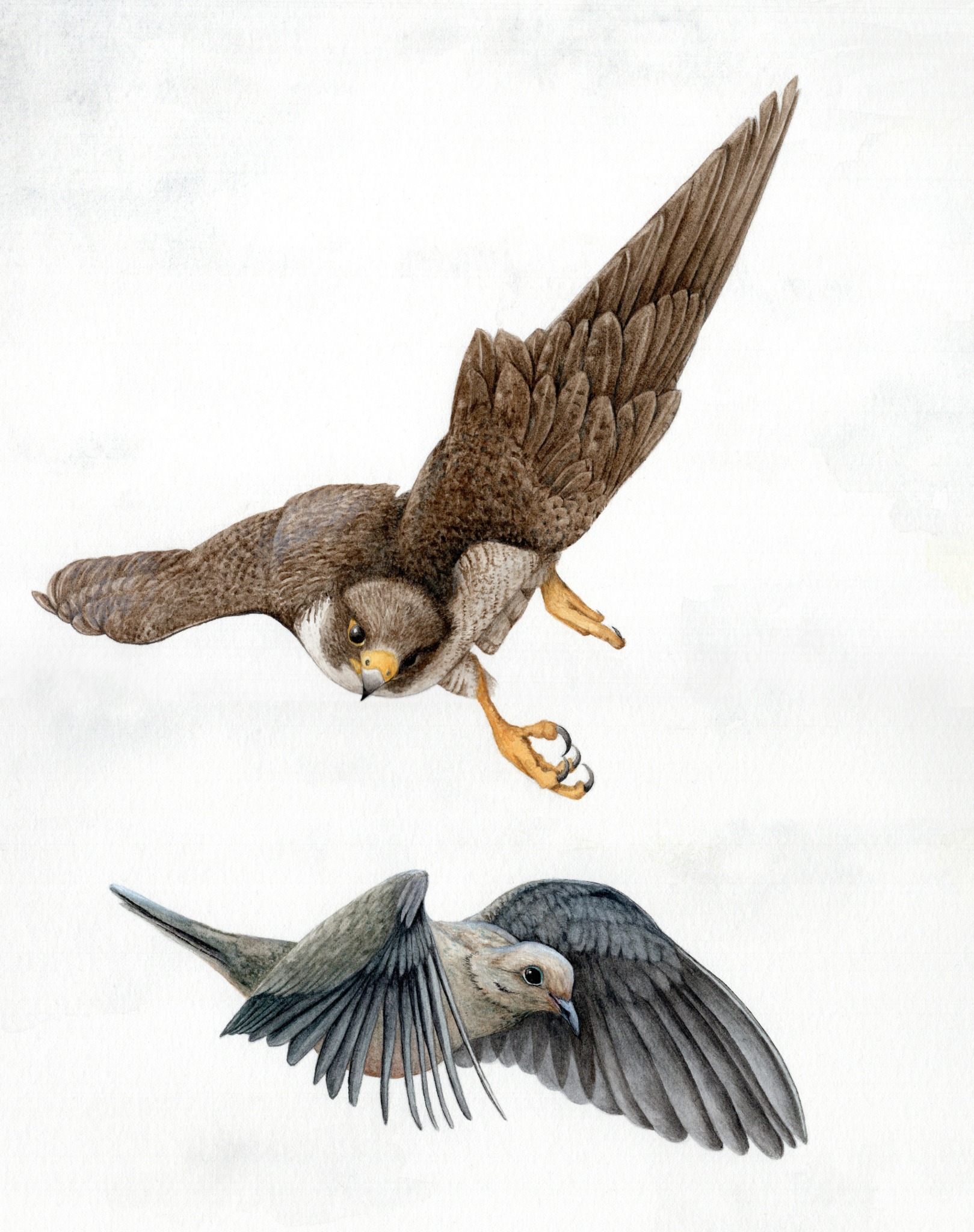We recently connected with Nora Sherwood and have shared our conversation below.
Alright, Nora thanks for taking the time to share your stories and insights with us today. We’d love to hear the backstory behind a risk you’ve taken – whether big or small, walk us through what it was like and how it ultimately turned out.
Deciding to become a science illustrator at the age of 50 was an enormous risk. I really struggled with what I wanted for the next chapter in my life and I spent quite a few years trying to figure out what I should pursue next.
I had enjoyed a successful career in geographic information systems, getting a masters degree in the field in 1987 when it was very early days, and very “bleeding edge.” I can still speak fairly frequent DOS and am one of the few people I know with extensive experience with VAX machines.
The honest truth is that motherhood and a high-flying career in tech were not (are they now?!) at all compatible. Because I wanted to raise my child myself (vs. giving the job to a nanny) my opportunities in my field became more limited. That was frustrating, but of course I don’t regret the course I took. About 10 years into my career, my daughter was born, and I took increasingly less exciting and respected positions in the field, just to be able to stay in.
When I felt I’d taken that career about as far as I could, given my circumstances, I decided to do something different. That’s when I chucked my job and went to science illustration school at the University of Washington in 2013. It was incredibly hard work, trying to gain a full new suite of difficult skills at that point in my life, but thanks to a lot of supportive people (especially my husband) I persevered and learned what I could. I’ve continued to develop my skills in the meantime.
I’m probably the last generation of science illustrators who primarily use “traditional techniques” (e.g. putting media on paper). Most new science illustrators work on computers, and if I was younger I would definitely re-train. But I’m edging up to retirement, and looking forward to spending time painting more just for fun!

Great, appreciate you sharing that with us. Before we ask you to share more of your insights, can you take a moment to introduce yourself and how you got to where you are today to our readers.
I joined the field of science illustration as a mid-life career changer after many years in the world of high tech. I graduated from the University of Washington’s Natural Science Illustration certificate program in Spring 2014, and am now a full-time, self-employed artist.
Intricate details and patterns found in nature are endlessly fascinating; I enjoy the challenge of portraying them on paper. Watercolor – my primary medium – is a highly technical but powerful medium that allows me to construct illustrations in layers, always considering pigment characteristics and color theory to build forms and create depth. In addition to watercolor, I also work extensively with colored pencils, pen and ink, graphite and scratchboard.

Is there a particular goal or mission driving your creative journey?
Yes, my focus is on conservation. As a science illustrator, I like to be guided by this famous quote by Senegalese forester Baba Dioum: “In the end we will conserve only what we love, we will love only what we understand and we will understand only what we are taught.” Science illustrators work with individuals and organizations to help tell stories and explain concepts visually. Everything I’ve done professionally has been oriented toward getting people to understand that we are living on a planet with limited resources, and how we act makes a big difference. (It doesn’t seem to make much difference in the face of greed, but I’m still happy with my choices.)
Another focus of mine is to improve the overall quality of science illustration work and respect for the field. Organizations used to have science illustrators on staff, but more and more it is a freelance business. Cost-cutting and getting things done quickly and cheaply is the rule of the day, and it’s hard for potential clients to understand the amount of time and effort that goes into the kinds of illustrations created by trained and experienced science illustrators.
Finally, I really enjoy teaching people how to create artwork – it’s another way to get people to appreciate the world in which we live. Many people have the mistaken idea that people who create quality artwork have a “gift,” but I’ve found that making the kind of art I make actually relies on learning techniques and tools. And if I can learn them, especially later in life, other people can too. It’s fun helping people move along their artwork journey.

We’d love to hear a story of resilience from your journey.
I would say my resilience story is changing careers from high tech to illustration as a person in my early 50’s. I had very little art background but was ready to move on from my role in tech. Realizing how hard I was going to have to work to gain the skills I would need to succeed as an independent illustrator was really daunting. It is really humbling to understand how difficult it is to draw and make realistic illustrations. It’s hard to really suck at something when you want to be good at it! It’s a huge undertaking and one that required a lot of patience and hard work.
Luckily, coming from a scrappy tech background as far back as the late 1980’s, I already had skills around hustling to find work, managing clients, rudimentary marketing, etc.
Contact Info:
- Website: https://www.norasherwood.com
- Instagram: norasherwood_science_art
- Facebook: NoraSherwoodArtandScienceIllustration


Image Credits
Artwork by Nora Sherwood


